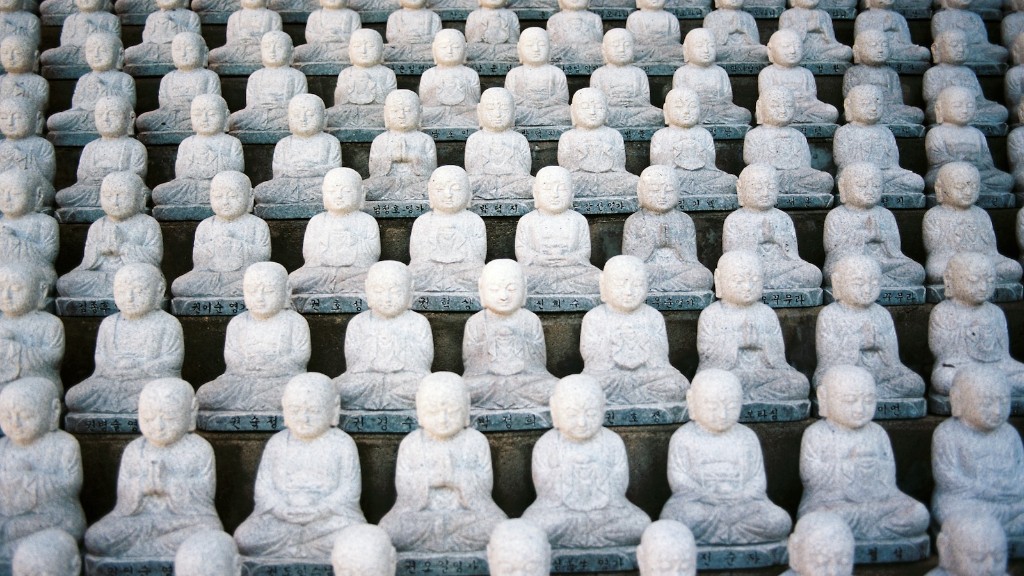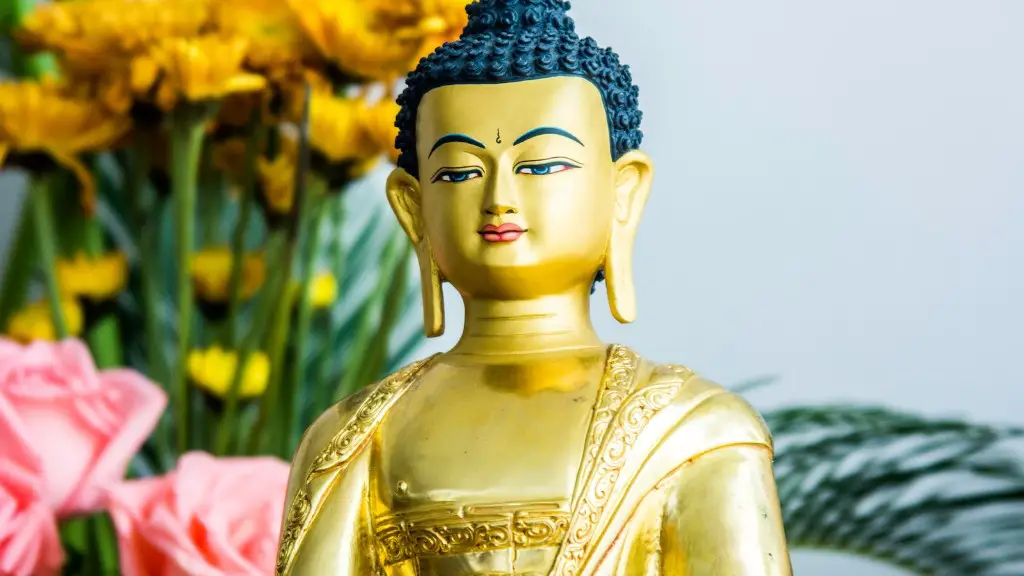Buddhism is a religion and philosophy based on the teachings of Siddhartha Gautama, who was born in present-day Nepal in the 6th century B.C.E. According to Buddhist tradition, Gautama achieved nirvana, or enlightenment, after a 49-day period of meditation and spent the rest of his life teaching others the path to nirvana.
The path to nirvana is through the Four Noble Truths and the Eightfold Path. The Four Noble Truths are that life is suffering, that suffering is caused by desire and attachment, that suffering can be ended by releasing oneself from desire and attachment, and that this can be achieved by following the Eightfold Path.
The Eightfold Path is a program of right living that includes right understanding, right thought, right speech, right action, right livelihood, right effort, right mindfulness, and right concentration.
Nirvana is an ultimate state of freedom from suffering and the cycle of rebirth. In order to attain nirvana, one must follow the path of the Buddha and practice the Noble Eightfold Path. This path includes right understanding, right thought, right speech, right action, right livelihood, right effort, right mindfulness, and right concentration.
What are the 8 steps to nirvana?
The Eightfold Path is a set of eight practices that are designed to help a person achieve enlightenment. The practices are: right view, right resolve, right speech, right conduct, right livelihood, right effort, right mindfulness, and right samadhi. Each of these practices has a specific purpose and role to play in the path to enlightenment.
Nirvana is the highest state that someone can attain in Hinduism and Buddhism. It is a state of enlightenment, meaning a person’s individual desires and suffering go away. This belief emphasizes meditation and how much it helps achieve this state. Meditation brings wisdom; lack of meditation leaves ignorance.
What are the 4 stages of nirvana
The Four Stages of Enlightenment are the stages that one must progress through in order to achieve Nirvana. The first stage is that of the Sotapanna, or stream-enterer. This is the stage where one first begins to see the truth of the Four Noble Truths and the Eightfold Path. The second stage is that of the Sakadagami, or once-returner. This is the stage where one begins to make progress on the path and starts to see the impermanence of all things. The third stage is that of the Anagami, or non-returner. This is the stage where one has cut off all attachment to the world and is only focused on the path to Nirvana. The fourth and final stage is that of the Arahant, or enlightened one. This is the stage where one has attained Nirvana and is free from the cycle of birth and death.
Buddhists believe that Nirvana is the highest state that a person can achieve. Once a person has attained Nirvana, they will be free from all worldly desires and suffering. They will also be free from the Wheel of Life, which is a symbol of the cycle of birth, death, and rebirth.
What are the 5 hindrances to nirvana?
The five hindrances are:
1. Sensual desires
2. Ill will
3. Apathy and laziness
4. Anxiousness
5. Doubt
There are many different paths to nirvana, and each individual must find their own way. However, those who achieve nirvana on their own become buddhas, or awakened ones. This is different from “the Buddha,” the specific buddha who was incarnated as Siddhartha. Each individual has the potential to become a buddha, and it is through our own efforts and understanding that we can achieve this state.
What happens after you reach nirvana?
In Buddhism, Parinirvana is the final nirvana, which occurs after death, for someone who has attained nirvana during their lifetime. It implies a release from Saṃsāra, karma and rebirth as well as the dissolution of the skandhas.
The focus of practice in Buddhism is primarily on attaining Arhatship, which is the state of Nirvana. The Pali Canon has examples of both male and female Arhats who have attained Nirvana.
What does achieving nirvana look like
Nirvana is a state of profound peace and bliss that is said to be achieved when one is freed from the cycle of rebirth. This can be attained through the practice of meditation and other spiritual disciplines. When attained, it is believed that one’s mind is transformed, becoming happy, peaceful and free from negative mental states.
Achieving nirvana is a difficult task that may take a long time to accomplish. Even if it feels impossible, keep trying and you may eventually achieve success.
What is the ultimate goal of nirvana?
It is believed that life is suffering because we are constantly undergoing the cycle of birth and death. In Buddhism, the ultimate goal is to end this cycle of suffering and achieve nirvana. Nirvana is a state of complete peace and freedom from desire and suffering. In order to achieve nirvana, one must follow the Noble Eightfold Path. This path includes right understanding, right thought, right speech, right action, right livelihood, right effort, right mindfulness, and right concentration.
There are 10 signs of spiritual enlightenment and awakening. Some examples of these signs are:
1. Observing your patterns: becoming aware of the thoughts, emotions, and behaviors that make up your patterns.
2. Feeling a sense of connection: feeling connected to something larger than yourself, whether it be the universe, a higher power, or all of humanity.
3. Letting go of attachment: letting go of attachment to material possessions, your ego, and your own self-importance.
4. Finding inner peace: accepting yourself and your life situation, and finding contentment and tranquility within yourself.
5. Increasing your intuition: trusting your gut feelings and intuition more than your rational mind.
6. Having synchronicity: experiencing meaningful coincidences and “luck” that seem to have a message for you.
7. Increasing your compassion: feeling more empathy and compassion for others, even those who you don’t know or don’t agree with.
8. Being present: being fully in the moment and not letting your mind wander off into past or future concerns.
9. Having a sense of detachment: not being too attached to the outcomes of
Do enlightened beings get angry
It is interesting to note that even though self-transcendence can often lead to positive emotions, such as joy and peace, it does not mean that negative emotions never arise. In fact, even enlightened people can still feel strong negative emotions, such as anger, when they are facing difficult situations. Therefore, it is important to remember that transcendence does not always mean that everything will be perfect and that negative emotions are a normal part of the range of human emotions.
Bucke’s characteristics of enlightenment are spot on! Enlightenment is definitely a joyous and lifelong journey of self-discovery and connection with the universe. To have such a profound sense of satisfaction and contentment with life is an amazing feeling and definitely a result of living in the light.
What are the 3 sins in Buddhism?
The Three Poisons are the basic causes of suffering. They are greed, ignorance and hatred. These are often represented as a rooster (greed), a pig (ignorance) and a snake (hatred).
These five “sins” are seen as particularly anti-Buddhist and are therefore heavily discouraged. Killing one’s mother or father goes against the Buddhist tenet of filial piety, while killing an arhat or injuring a buddha goes against the fundamental respect for all sentient beings. Causing a division in the Buddhist community is seen as creating disharmony and interfering with the goal of universal enlightenment.
Conclusion
There is no one answer to this question as everyone’s path to nirvana is different. However, there are some basic tenets of Buddhism that can help guide you on your journey. These include developing a deep understanding of the Four Noble Truths, practicing the Eightfold Path, and meditating regularly. by following these teachings, you can begin to create a more peaceful and harmonious life for yourself and eventually attain nirvana.
Nirvana is the final goal of Buddhism, and it represents the end of the cycle of rebirth and suffering. To attain nirvana, one must follow the Eightfold Path, which includes right understanding, right thought, right speech, right action, right livelihood, right effort, right mindfulness, and right concentration. Through following this path, one can achieve the ultimate goal of Buddhism, which is to end suffering and attain Enlightenment.




